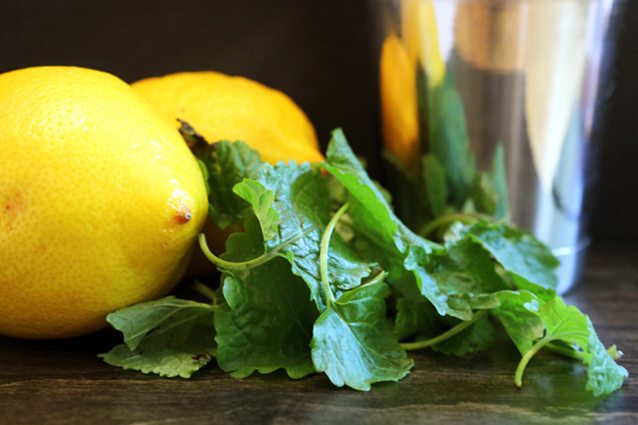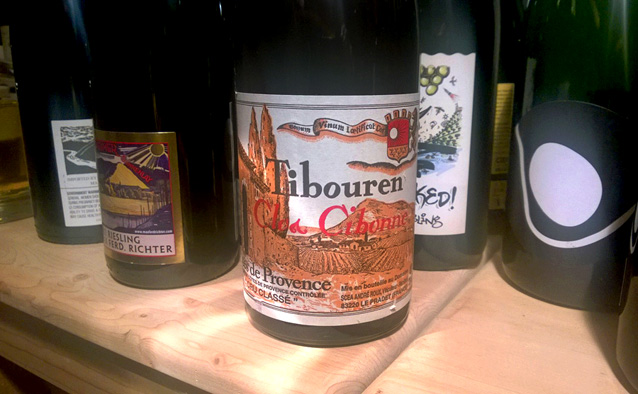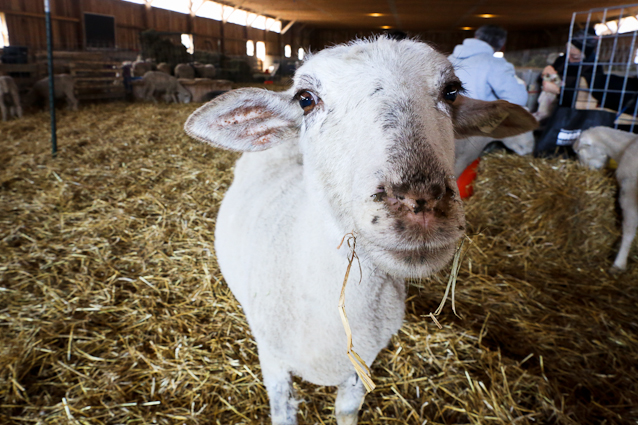Now that spring has sprung, it’s backyard party time. And while we like throwing back a Crooked Tree or two as much as the next dude, sometimes a refreshing cocktail just hits the spot. Spring herbs and greens are readily available now at the farmer’s market, so if you’re looking for something to spark a little happy hour on your patio, consider giving this riff on a gimlet a try.

The Briggs Gimlet (as a single cocktail)
- 2 oz gin
- .5 oz fresh lemon juice
- .5 oz cucumber syrup (recipe below)
- Sorrel (optional)
- Sparkling water
- Garnish: Lemon balm, lemon verbena, basil, or mint
- Combine first four ingredients in your shaker, add ample ice, shake the hell out of it. Double strain over large ice, and add about an ounce of soda water (or to taste). Garnish with a sprig of your chosen herb by gently smacking the leaves against your wrist or palm to express the aromatics, then place it at the rim of the glass.
Made as a Batched Punch for Your Rad Party
- Keeping the same 4:1:1 proportions, decide how much you want to make, and do the math on how much you need. You will need the same amount of soda water as you use gin (e.g., if you use a bottle of gin, you need 750mL of soda water).
- Using a muddler or a fat wooden spoon, muddle the sorrel into your gin in batches, straining the used sorrel out and discarding it.
- Combine all the ingredients except the soda water. Keep the drink chilled for about two hours.
- Right before serving, combine the chilled drink with the chilled soda water and briefly stir to combine. If you can, use a container with a fitted lid to keep the drink effervescent.
- Pour over ice and garnish as you would with the cocktail.
- Consume eagerly.
Making the Cucumber Syrup
- You’ll need a power juicer. Run a cucumber through the juicer and strain the juice out into a measuring cup.
- Combine the strained juice with an equal amount of white cane sugar in a small pot. (e.g., if you have one cup of cuke juice, add one cup of sugar).
- Heat the mixture, stirring with a whisk to incorporate. Do not overheat or the syrup will separate into a pale syrup and chunky cuke leftovers. If you heat it gently, the syrup will retain a deep green color.
- Let it cool and keep in a bottle in your fridge.

